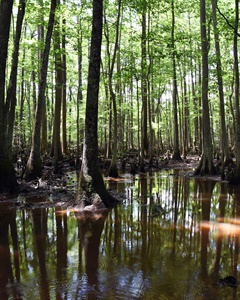Have you ever wondered about the native plants and animals that were in Arkansas in the 1800s? Were they the same or different than what we encounter today?
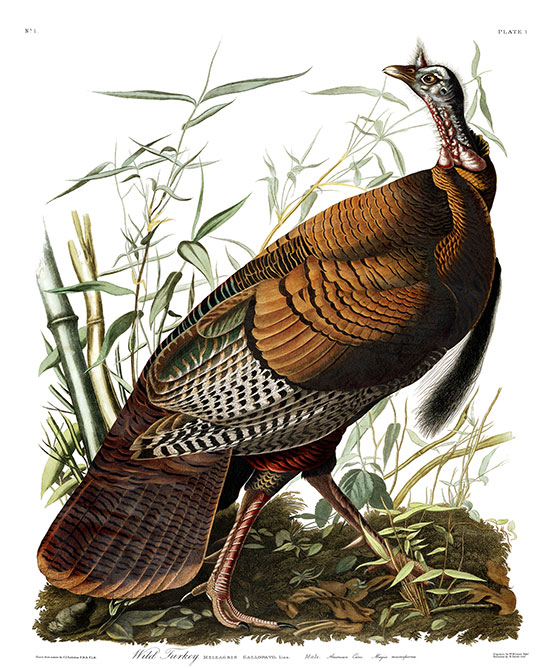 If you were to time travel to Arkansas in the 1800s, you might discover
some of the unique plants and animals of the time and note differences and similarities to the Arkansas of today. Beginning in the lowlands of southeast Arkansas, traveling in a flatboat or canoe down a river, you would have seen turtles sunning on
logs along the banks, much as you would now. You would also see American alligators (Alligator mississippiensis), which can be found in the southern third of modern-day Arkansas. However, they are not as common as they were in the 1800s.
If you were to time travel to Arkansas in the 1800s, you might discover
some of the unique plants and animals of the time and note differences and similarities to the Arkansas of today. Beginning in the lowlands of southeast Arkansas, traveling in a flatboat or canoe down a river, you would have seen turtles sunning on
logs along the banks, much as you would now. You would also see American alligators (Alligator mississippiensis), which can be found in the southern third of modern-day Arkansas. However, they are not as common as they were in the 1800s.
Along the banks of the river, you would encounter a tall, native plant known as river cane (Arundinaria gigantea), which is a type of bamboo (Read more about river cane in 'Can GLO Notes Help Find a Sleeping Giant?') River cane could grow to over 25 feet in height, taller than a two-story building, growing in thick patches called canebrakes. Many animals found shelter and food in the canebrakes, including white-tailed deer (Odocoileus virginianus), swamp rabbits (Sylvilagus aquaticus), wild turkey (Meleagris gallopavo), Bachman\u0027s warbler (Vermivora bachmanii) and American black bears (Ursus americanus). Timber rattlesnakes (Crotalus horridus) were so commonly found in the canebrakes that they became known as “canebrake rattlers.”
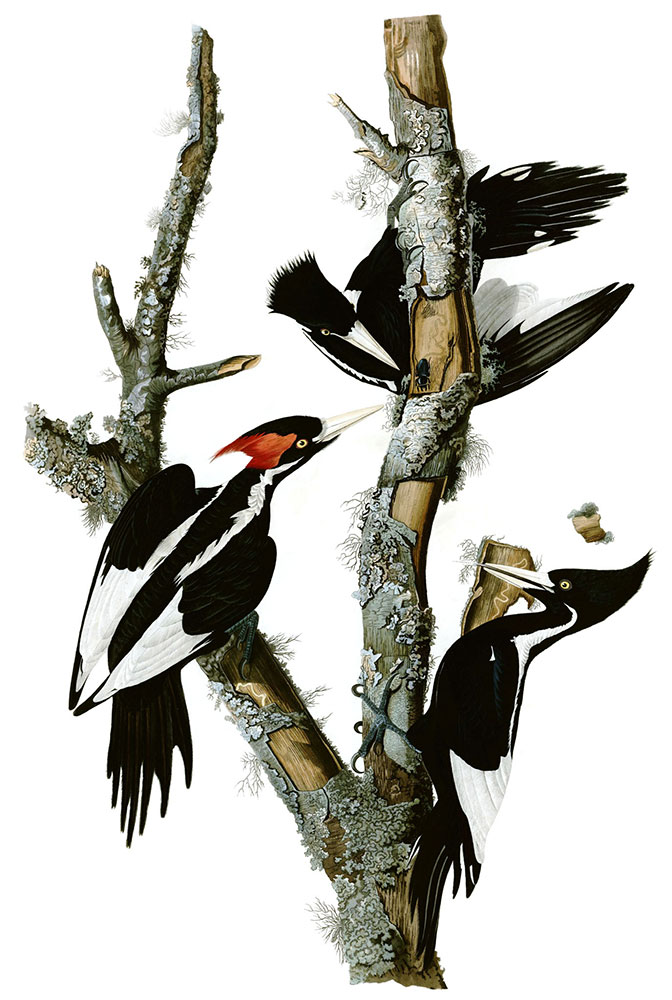 If you journeyed beyond, to areas where the rivers
flooded and creeks emptied into the rivers, you would see vast areas of wetlands and swamps. Large, tall trees grew in the swamps – tree species that still grow here, such as bald cypress (Taxodium distichum) and water tupelo (Nyssa aquatica).
You might hear the horn-like call of a famous bird that made its home in these big trees - the ivory-billed woodpecker (Campephilus principalis). Named for its pale, ivory-colored bill, it was the largest of Arkansas’s woodpeckers.
It foraged in and along the edges of swamplands and could also be found in drier forests with large trees such as pines, oaks, elms, and ashes. John James Audubon, the famous 1800s explorer and artist, painted an illustration of ivory-billed woodpeckers
and reported seeing them while visiting Arkansas. Sadly, this beautiful bird was considered extinct by the 1940s.
If you journeyed beyond, to areas where the rivers
flooded and creeks emptied into the rivers, you would see vast areas of wetlands and swamps. Large, tall trees grew in the swamps – tree species that still grow here, such as bald cypress (Taxodium distichum) and water tupelo (Nyssa aquatica).
You might hear the horn-like call of a famous bird that made its home in these big trees - the ivory-billed woodpecker (Campephilus principalis). Named for its pale, ivory-colored bill, it was the largest of Arkansas’s woodpeckers.
It foraged in and along the edges of swamplands and could also be found in drier forests with large trees such as pines, oaks, elms, and ashes. John James Audubon, the famous 1800s explorer and artist, painted an illustration of ivory-billed woodpeckers
and reported seeing them while visiting Arkansas. Sadly, this beautiful bird was considered extinct by the 1940s.
 In higher, drier areas of 1800s Arkansas, you would see
great expanses of grasslands and prairies covered with tall grasses (some up to 8 feet tall) and many colorful wildflowers. If you ran through the tall grasses, you might flush a fancy bird, the greater prairie chicken (Tympanuchus cupido).
Deer, rabbits, fox, and the red wolf (Canis rufus) also lived here. Both the red wolves and the prairie chickens are now extirpated from Arkansas, meaning they no longer live here.
In higher, drier areas of 1800s Arkansas, you would see
great expanses of grasslands and prairies covered with tall grasses (some up to 8 feet tall) and many colorful wildflowers. If you ran through the tall grasses, you might flush a fancy bird, the greater prairie chicken (Tympanuchus cupido).
Deer, rabbits, fox, and the red wolf (Canis rufus) also lived here. Both the red wolves and the prairie chickens are now extirpated from Arkansas, meaning they no longer live here.
Traveling through the forests of Arkansas, you would likely encounter large animals, including elk (Cervus sp.), mountain lions (Puma concolor), and American black bears. In fact, Arkansas had so many bears at this time that it was nicknamed
the “bear state.” When the Arkansas state flag was being designed in 1913, there were suggestions for putting a black bear on the flag (at least three of these designs are on record at the Arkansas State Archives). Many people hunted black
bears and used all parts of the animal, not just the meat. The fur could be made into warm clothing, blankets, or rugs. Oil rendered from bear fat was good for cooking and burning in oil lamps. (Remember, there was no electricity in the 1800s, so
oil lamps were used for lighting.) Even the bear’s bones were used to make things like sewing needles. Due to over-hunting and habitat loss, the black bear population declined so much that the Arkansas Game and Fish Commission (AGFC) started
a bear recovery program in the mid-1900s. Currently, there are about 5,000 black bears in Arkansas.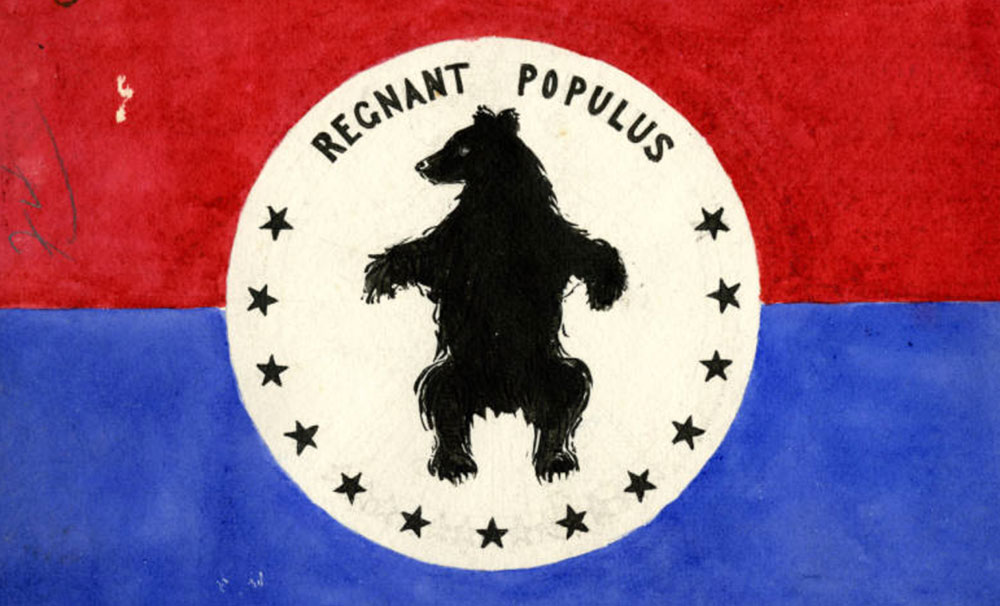
If you searched the forests of Arkansas in the 1800s, you could find many plants that produced an abundance of food for animals and people, such as wild blueberries (Vaccinium spp.), wild grapes (Vitis spp.), and plants with edible roots like wild potato vine (Ipomoea pandurata). Two very common trees, the Ozark chinquapin (Castanea ozarkensis) and the Allegheny chinquapin (Castanea pumila), were also important sources of food. Both trees are related to the American chestnut tree (Castanea dentata) and produce tasty, nutritious nuts, called “chinquapins.” They are similar to chestnuts, only smaller. Animals, such as bears, foraged heavily on the chinquapins in fall to gain fat for the winter. People gathered them, filling bags and buckets full, to take them home and roast them.
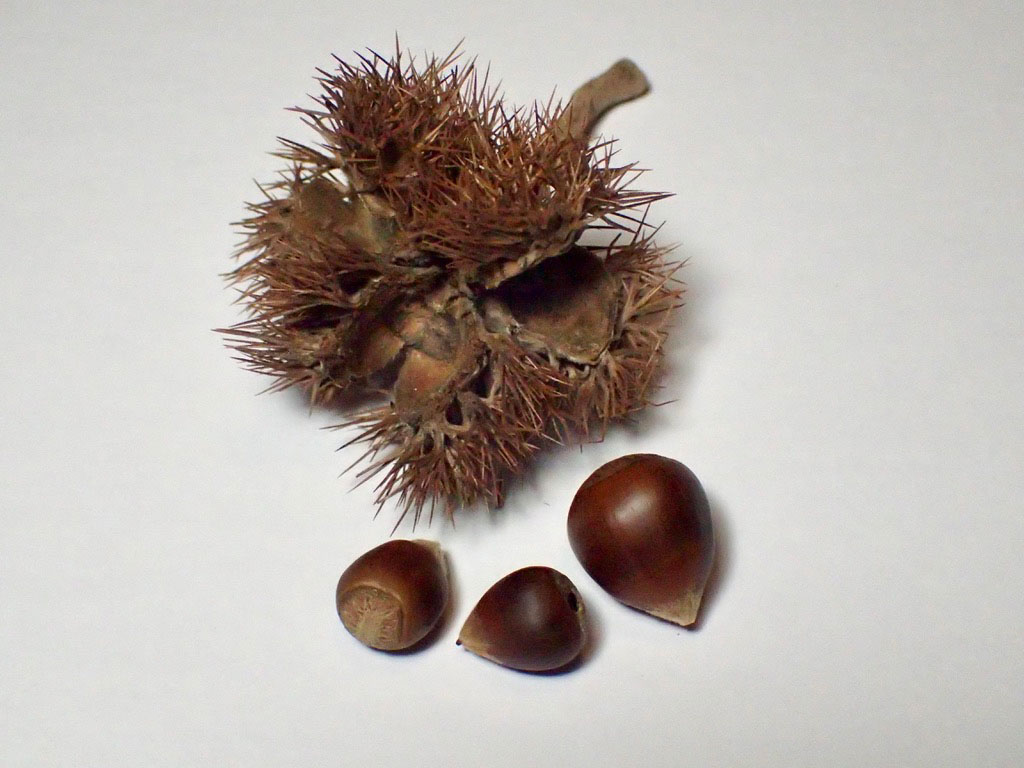 Unfortunately, a fungal disease known as chestnut blight began
affecting Arkansas’s chinquapin trees in the mid-1900s, killing the trees down to the roots. New shoots can emerge around these infected stumps, but the disease persists, and the shoots never grow and mature enough to produce nuts. Fortunately,
researchers have located a small number of mature Ozark chinquapin trees that have not succumbed to the blight and are working to propagate these remaining disease-resistant trees. Perhaps someday, the Ozark chinquapin will once again be a common
tree in our state.
Unfortunately, a fungal disease known as chestnut blight began
affecting Arkansas’s chinquapin trees in the mid-1900s, killing the trees down to the roots. New shoots can emerge around these infected stumps, but the disease persists, and the shoots never grow and mature enough to produce nuts. Fortunately,
researchers have located a small number of mature Ozark chinquapin trees that have not succumbed to the blight and are working to propagate these remaining disease-resistant trees. Perhaps someday, the Ozark chinquapin will once again be a common
tree in our state.
Our time travel journey only touched on some of the many plants and animals living in Arkansas in the 1800s, but you can see that there are many differences between the Arkansas of the past and the Arkansas of the present. Since the 1800s, urban development, agriculture, fire suppression, and the spread of invasive plant species have changed many of our diverse ecosystems. Through science-based conservation, the Arkansas Natural Heritage Commission (ANHC) works to protect our state’s biological diversity and most ecologically sensitive lands. These efforts are aimed at ensuring that Arkansas’s natural heritage is not lost.
Photos:
Top – Plate 1, Wild turkey (Meleagris gallopavo), by John James Audubon. Cane plants can be seen behind the turkey in the image.
Top left – Ivory-billed woodpecker (Campephilus principalis), by John James Audubon.
Middle right – Red wolf (Canis rufus), by John Woodhouse Audubon.
Right – One of the bear design submissions for the Arkansas state flag in 1913. Photo courtesy of the Arkansas State Archives.
Left – Chinquapins from the Ozark chinquapin (Castanea ozarkensis) tree. Photo by Leslie Patrick.
Bottom left – Falcon Bottoms Natural Area in the Coastal Plain of Arkansas. Photo by Patrick Solomon.
